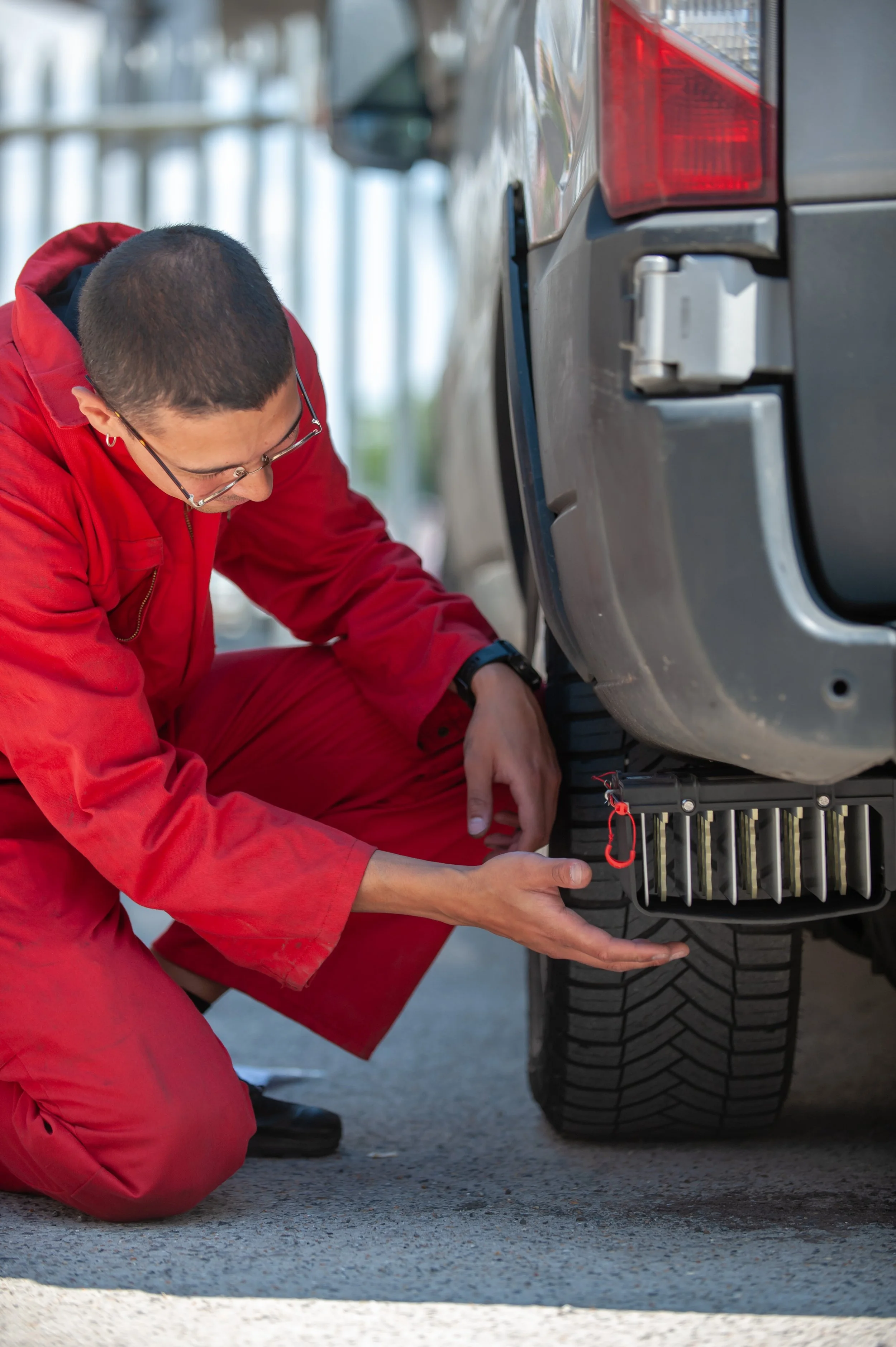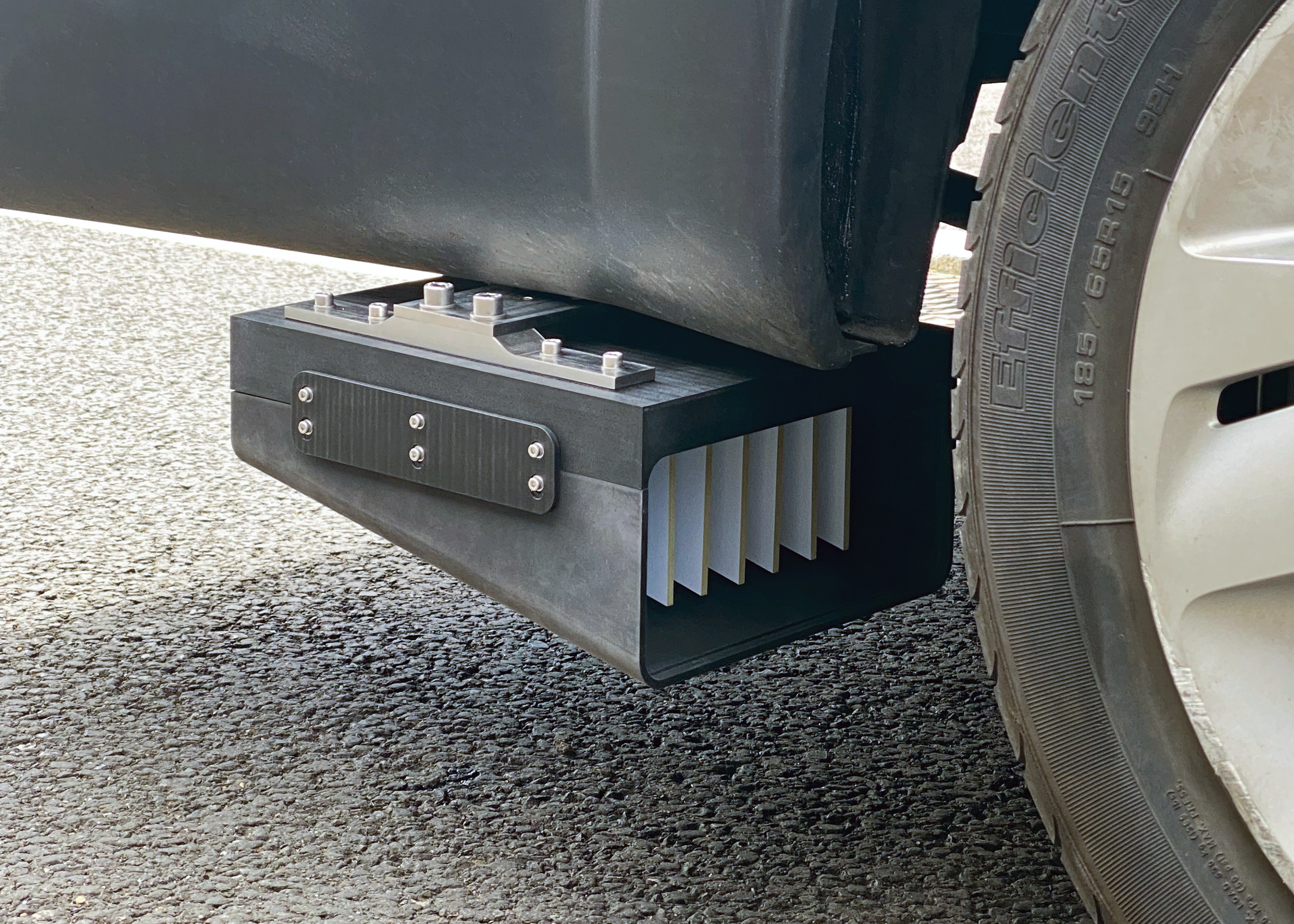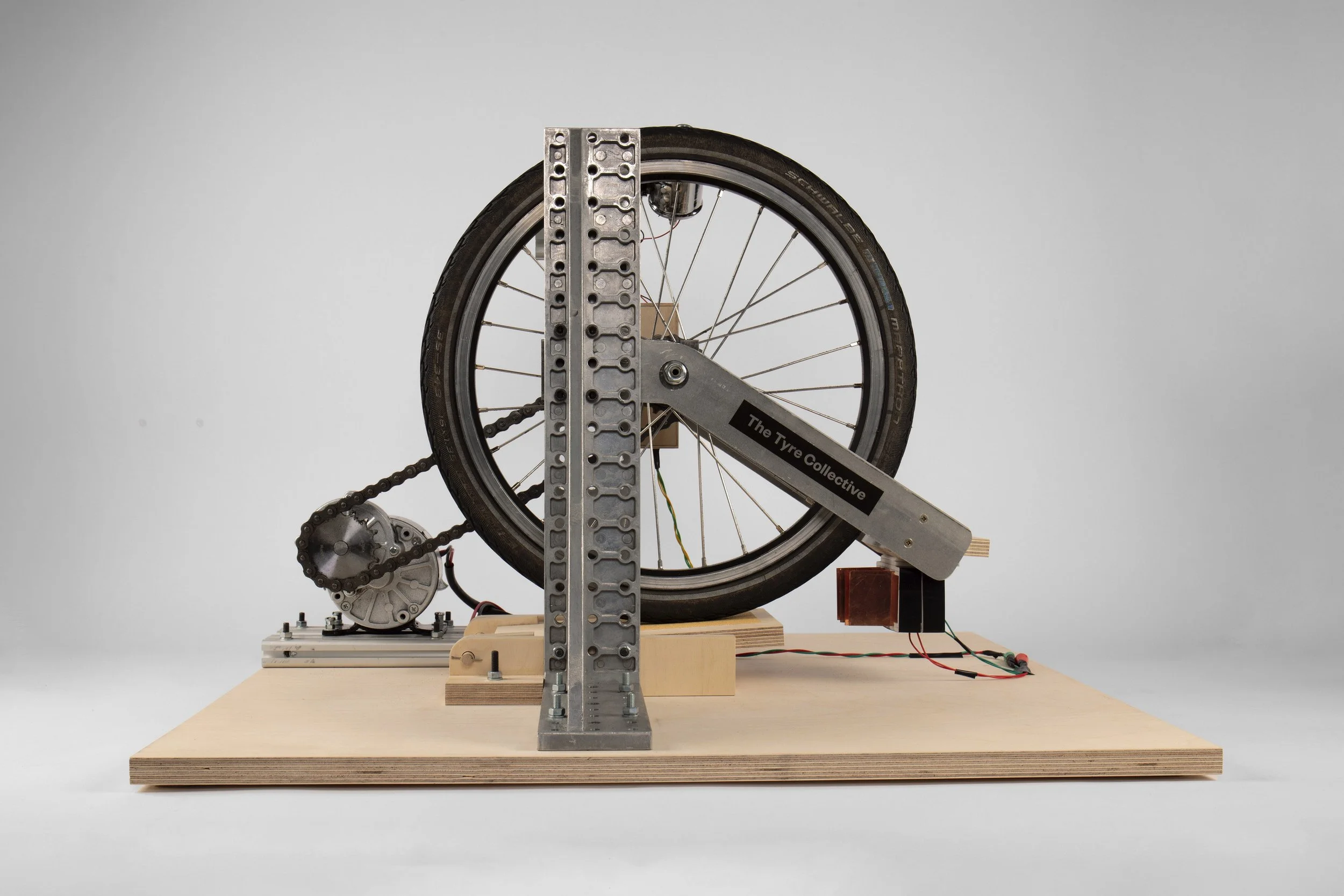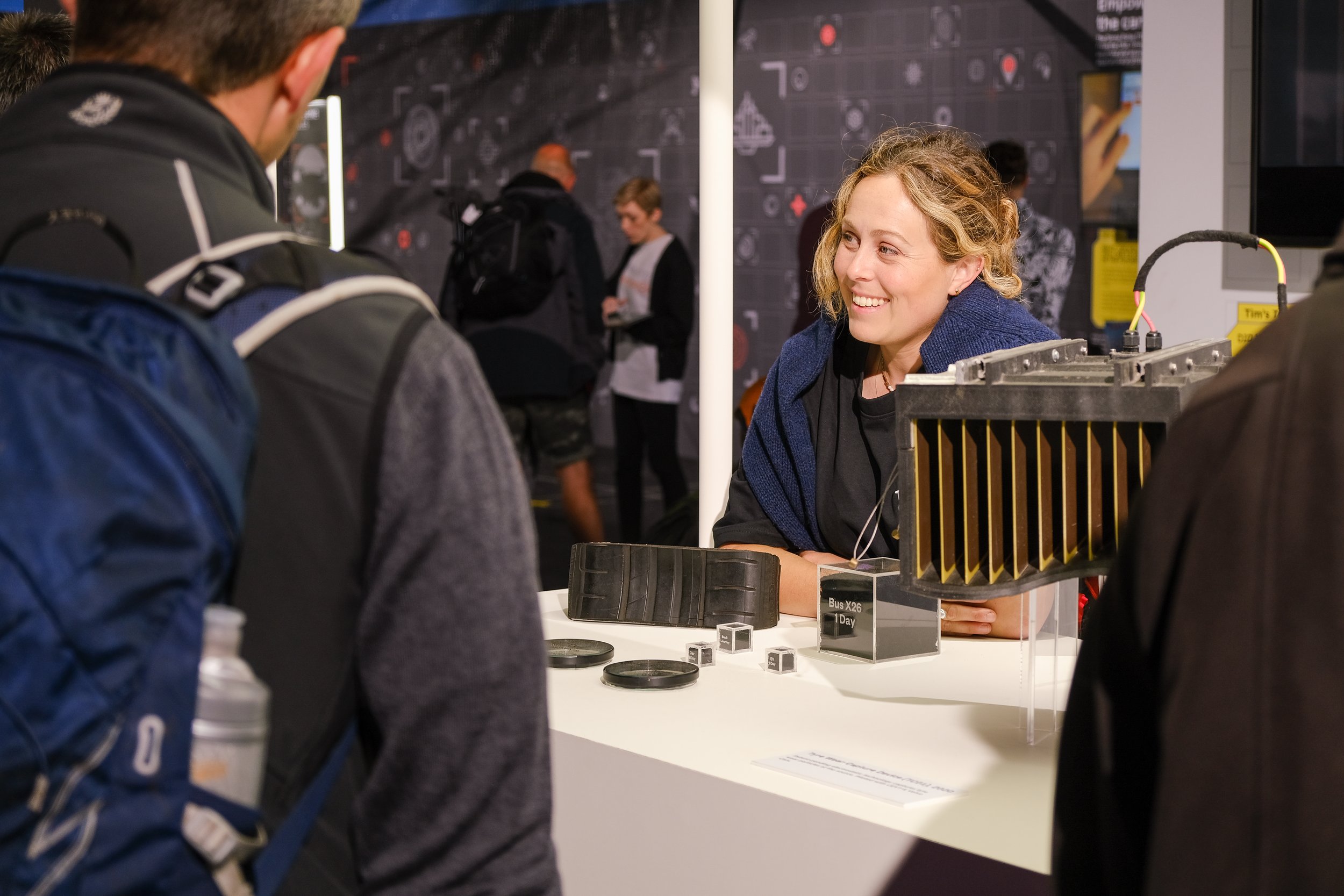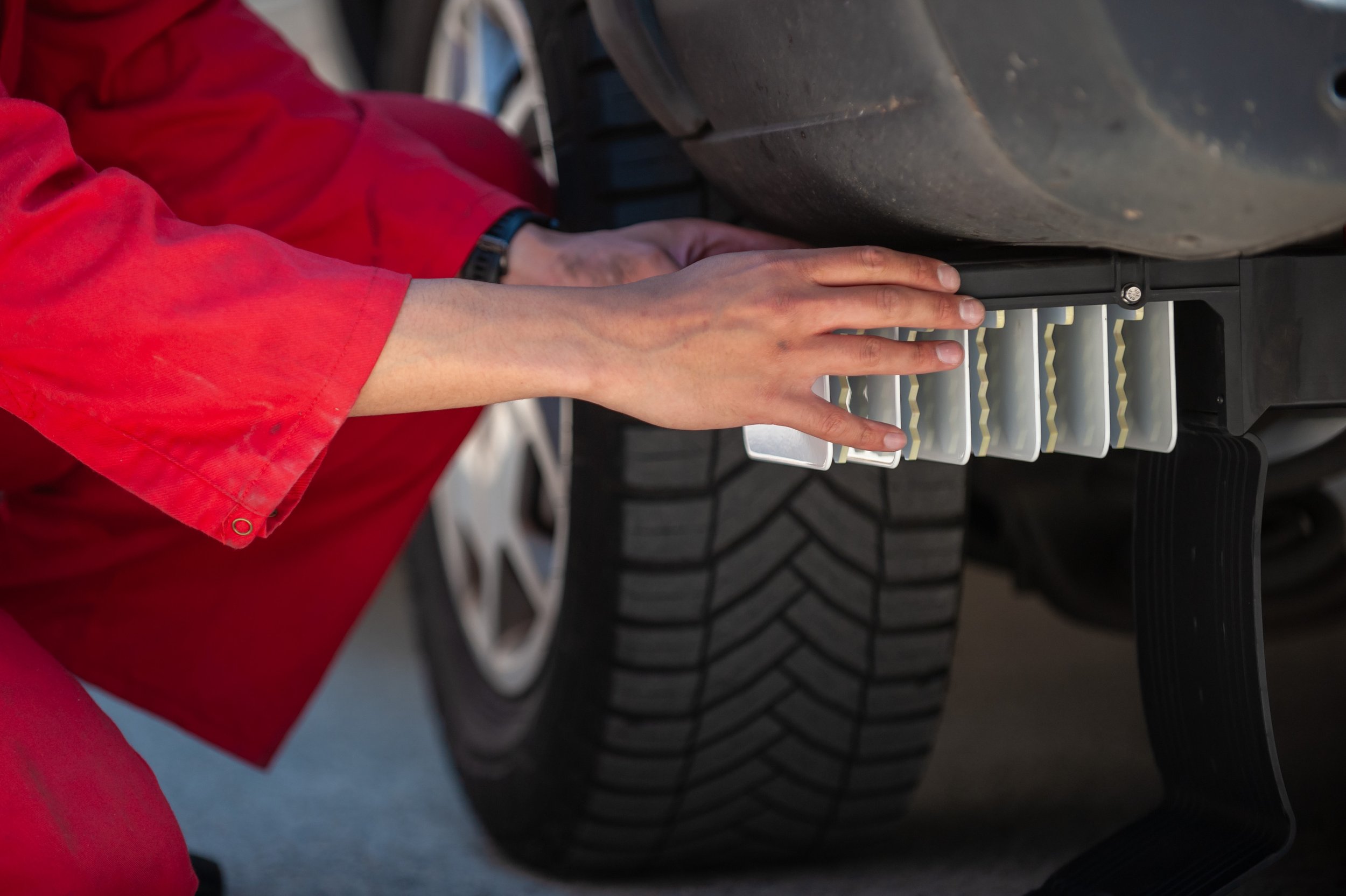
Impact Report 2024
We develop solutions to capture tyre wear for a cleaner, healthier environment.
Our First Impact Report
The Tyre Collective started four years ago as our master’s project at Imperial College London and the Royal College of Art. Today, we bring people across disciplines and industries together to tackle the complex problem of tyre wear. We work with the largest manufacturers, policymakers and researchers to develop and scale our technology – a true collective.
The past few months have been remarkable for us. We successfully closed our seed round and exceeded our crowdfunding target. With this funding, we were able to develop and test two new iterations of our tyre wear capture device, enabling us to secure new partnerships with industry leaders. From Euro 7, the UK Chief Medical Officer’s Report, to regulating 6PPDq, policies on tyre wear have also had a significant breakthrough.
Now is the time to tackle this global problem! We would like to thank our team, partners and supporters for joining us in our mission to save our air from tyre wear.
– Hanson, Hugo and Siobhan, Co-Founders
A Year in Review
We had an incredible year, piloting our latest prototypes on roads with new partners. We successfully closed our seed round, led by Katapult VC, overfunded our crowdfunding campaign, and participated in multiple exhibitions, raising awareness globally.
We exhibited at Material Matters, Goodwood Festival of Speed, and presented at COP28.
We piloted our device on roads with Rivian, PostNL and HIVED and completed a life cycle analysis.
We closed our seed round, received 2 Innovate UK grants, and completed the Breathable Cities and CRL accelerators.
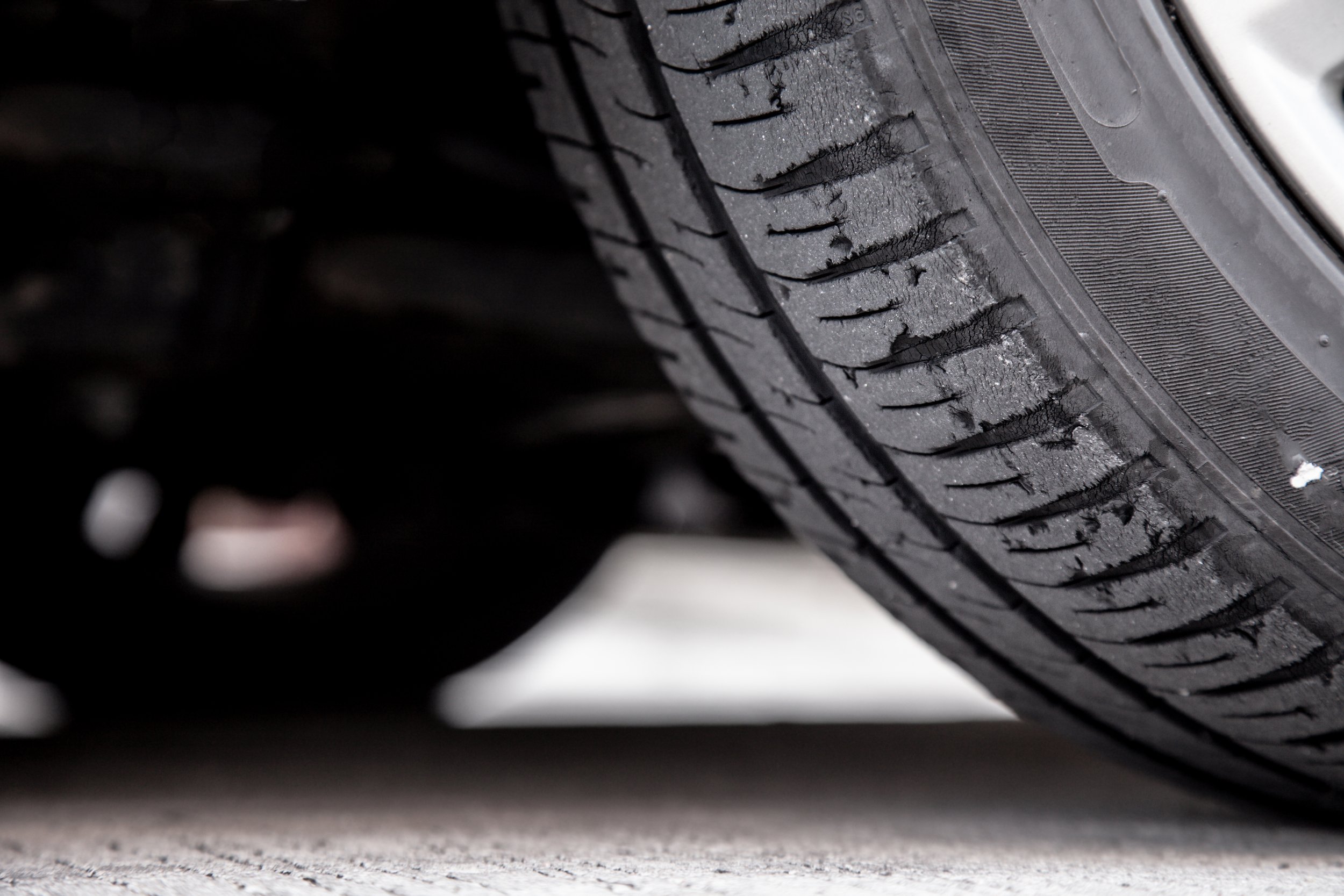
Impact
Our Commitment to the SDGs
Our impact areas focus on 4 key areas, relating to the United Nations SDGs: 3, 4, 9, 11, 12 and 14. We also use the B Impact Assessment as a guiding framework, aiming to become a B-Corp in 2025.
Innovation
Develop new products to capture and monitor tyre wear and other NEEs at source to improve air and water quality for all.
Research
Support leading organisations to advance research and knowledge on tyre wear to inform legislation.
Circularity
Reduce the amount of tyre wear ending up in landfills, closing the loop on captured waste by turning this pollution into new products.
People
Raise public awareness on tyre wear, air quality and microplastics through media and exhibitions.
-
We aim to improve air quality by removing tyre wear and NEEs to ensure healthy living.
3.9 By 2030, substantially reduce the number of deaths and illnesses from hazardous chemicals and air, water and soil pollution and contamination
3.9.1 Mortality rate attributed to household and ambient air pollution
-
We raise awareness on tyre wear to support urgent action to combat air and microplastic pollution and adapt policies to regulate non-exhaust emissions.
-
We established a new product category to capture tyre wear and NEEs and are building resilient infrastructures to support sustainable industrialisation.
9.1 Develop quality, reliable, sustainable and resilient infrastructure, including regional and transborder infrastructure, to support economic development and human well-being, with a focus on affordable and equitable access for all
9.4 By 2030, upgrade infrastructure and retrofit industries to make them sustainable, with increased resource-use efficiency and greater adoption of clean and environmentally sound technologies and industrial processes, with all countries taking action in accordance with their respective capabilities
-
We make cities more inclusive and safer by improving air quality.
11.6 By 2030, reduce the adverse per capita environmental impact of cities, including by paying special attention to air quality and municipal and other waste management
11.6.2 Annual mean levels of fine particulate matter (e.g. PM2.5 and PM10) in cities (population weighted)
-
We change consumption habits by reusing waste as a resource and ensuring responsible waste management.
12.4 By 2020, achieve the environmentally sound management of chemicals and all wastes throughout their life cycle, in accordance with agreed international frameworks, and significantly reduce their release to air, water and soil in order to minimise their adverse impacts on human health and the environment.
12.5 By 2030, substantially reduce waste generation through prevention, reduction, recycling and reuse
12.5.1 National recycling rate, tons of material recycled
12.6 Encourage companies, especially large and transnational companies, to adopt sustainable practices and to integrate sustainability information into their reporting cycle
12.8 By 2030, ensure that people everywhere have the relevant information and awareness for sustainable development and lifestyles in harmony with nature
-
We capture tyre wear at the source to prevent oxidation and toxins from leaching into the water and threatening marine life.
14.1 By 2025, prevent and significantly reduce marine pollution of all kinds, in particular from land-based activities, including marine debris and nutrient pollution
Goal 1
Apply for B-Corp Certification in 2024
This reflects our dedication to meet the highest standards of social and environmental performance, accountability, and transparency, ensuring sustainable impact for our stakeholders and the planet.
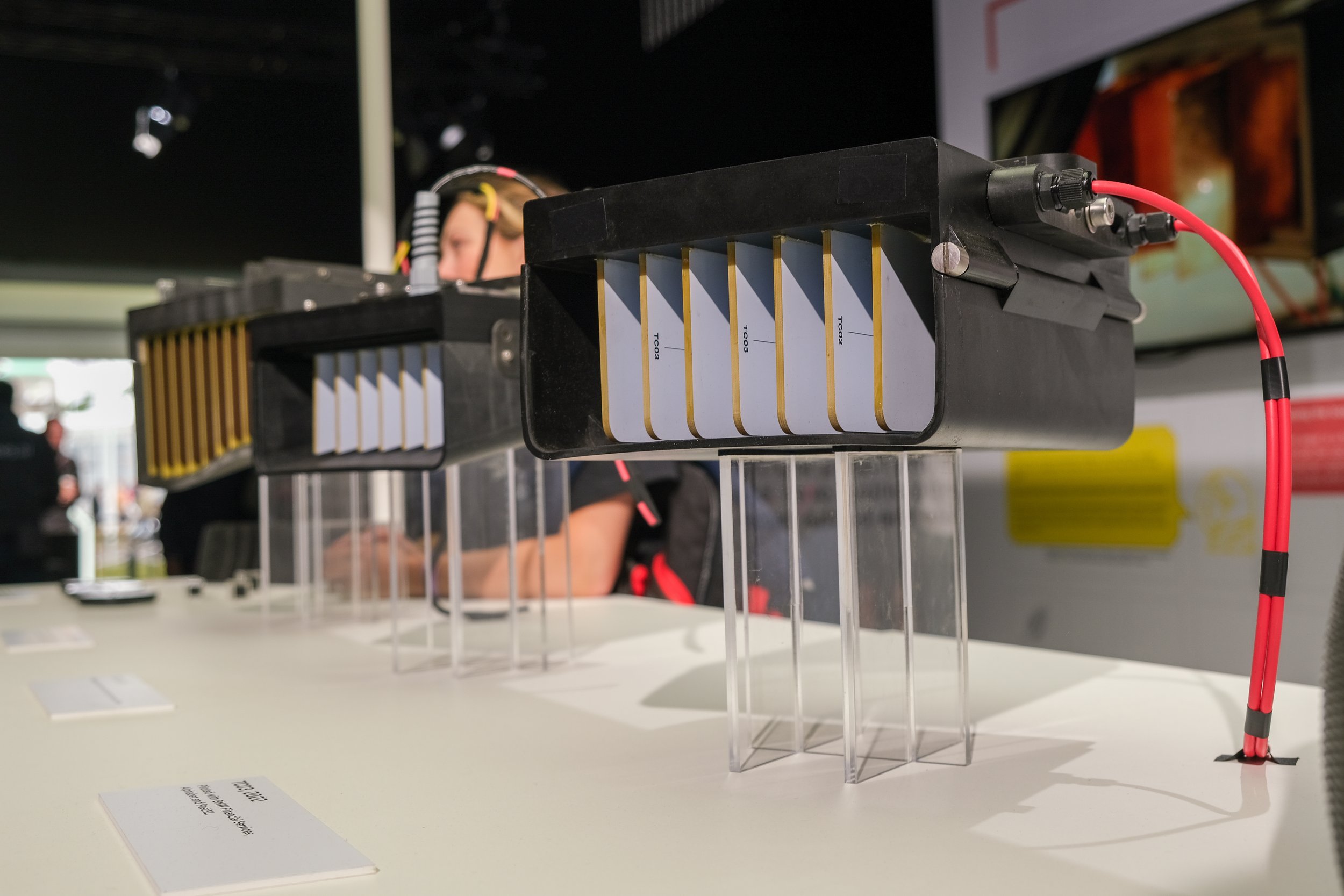
Innovation
Tyre wear is the dirty secret of the transport industry
Over 1.3M tonnes of tyre wear are produced in Europe every year
2nd-largest microplastic pollutant in our oceans and a major air pollution
By 2030, NEEs will be UK’s leading source of vehicle PM pollution
Towards true zero emissions
The Tyre Collective develops solutions to capture tyre wear at source. Tyres wear down every time a vehicle accelerates, brakes or corners. We discovered that tyre wear is charged by friction with the road. Our patent-pending technology uses electrostatics and airflow to capture them.
We help businesses to understand tyre emission rates of their fleets, quantify the environmental impact of reducing tyre wear, improve sustainability reporting and corporate responsibility.
Pilots. To date, we completed 11 pilots with industry partners. Starting with a proof of concept in 2020, we ran our first on-vehicle test with CEVT & Volvo Cars, a small fleet trial with Zhero, followed by paid pilots with Alphabet, BMW Financial Service, PostNL and Rivian. We are testing TC04 with HIVED on 5 electric delivery vans in London.
Ethical Standards. In 2024, we will continuously engage with diverse stakeholders across our industry. We have developed and sent out a new supplier questionnaire and published a Supplier Code of Conduct, enabling us to provide continuous enforcement of our ethical standards as a mandatory element of contracts.
“This collaboration aligns perfectly with our mission to not only provide the best customer experience possible, but to also provide one that minimises our impact on the planet. Through addressing this often-overlooked source of pollution, our work with The Tyre Collective demonstrates our commitment to sustainability, as well as our dedication to setting new standards within the logistics and transportation industry.”
Gemma Neal, Head of Impact at HIVED
“When we realised that there was a device in development that could help reduce and collect those emissions, we knew we wanted to be a part of that process.”
Ollie King, Co-Founder at Zhero
Goal 2
Commercialise Retrofit Device in 2025
Our retrofit device will be commercially available for vans up to 4 tonnes. The devices will come with embedded electronics and wireless data transfer, and have a streamlined maintenance process.

Circularity
From Pollution to Products
Tyre wear is a micronised rubber that can be upcycled into various applications, turning this pollutant into beautiful, functional objects. We collaborated with product designers, chemical engineers and material scientists to discover the potential of tyre wear and raise awareness.
The results were exhibited at Material Matters as part of London Design Festival in September 2023. This work was part of the Terra Carta Design Lab, an initiative led by King Charles III and Sir Jony Ive, as part of The Sustainable Markets Initiative.
Rafael El Baz. We explored how tyre particles can be used in various materials and how its properties change with increasing ratios. By turning these pollutants into everyday relatable objects, we raise awareness of this invisible pollution.
Qiang Li. Through incorporating captured tyre wear into jewellery, we turn this pollution into tangible precious objects. The brooch is inspired by a single tyre particle and features stones that reflect the elemental composition of tyre wear.
LOWPOLY. A series of objects were created with a custom-made pellet made with 20% tyre particles and recycled PLA, using a robotic arm 3D printer.
Queen Mary University. We worked with Maria Crespo’s Material for Sustainability research group to explore how carbonised tyre particles can be used in battery coin cells and pressure sensors.
Goal 3
Secure Partnerships to Scale Reuse Applications in 2026
Close the loop on captured waste, preventing particles from ending up in landfills and entering our environment.

Research
Tyre wear is an air and water pollutant. The smallest particles can be inhaled as an air pollutant. In the water, they leach toxic chemicals linked to killing various marine life. The Tyre Collective devices capture the most harmful particles by targeting the airborne and resuspended fraction of tyre wear.
Air
Inhaling PM is directly linked to adverse effects on human health. Toxicology studies report negative impacts on the cardiopulmonary system, developmental and reproductive health, and cancer. PM10 can penetrate deep into the lungs and PM2.5 can directly enter the circulatory system.
On roads, we capture up to 10% of the airborne particles by mass; in the lab, we achieved up to 80%. Our device captures particles ranging from 0.3 to 217 microns; up to 68% of the particles are smaller than 10 microns (PM10) by number. The material is captured at a very high purity, with up to 95% of the collected mass being non-exhaust emission (NEE) and 88% by mass being tyre wear.
Water
6PPD and its derivative 6PPD-quinone are acute water toxins and one of 470 organic components in tyres. It has received the most hazardous UN-GHS aquatic toxic classification, killing up to 90% of endangered salmon and is currently under legislation by the US EPA in California, Washington and on a federal level.
Particles below 100 microns leach more toxins than larger ones. In one of our pilots, we prevented 40L of water from being polluted per mile to the Lethal Concentration (LC50) for coho salmon per vehicle. If our devices were installed on one van that drove 500 km, it would prevent 12,280L of water from being polluted.
Partnerships & Publications
Our key research partners are Particle Vision and Eurofins. We published a poster titled “Quantification of TRWP & Brake Wear in PM10/PM10-2.5 Airborne Dust of Contrasting Sites” with Particle Vision, which was presented at SETAC in 2023.
We also supported various research initiatives led by the Pacific Northwest Consortium on Plastics and NIVA.
Goal 4
Contribute to 5 Research Studies in 2025
Advance research on tyre wear with a specific focus on health, toxicology and emission factors to fill knowledge gaps and support upcoming regulation.
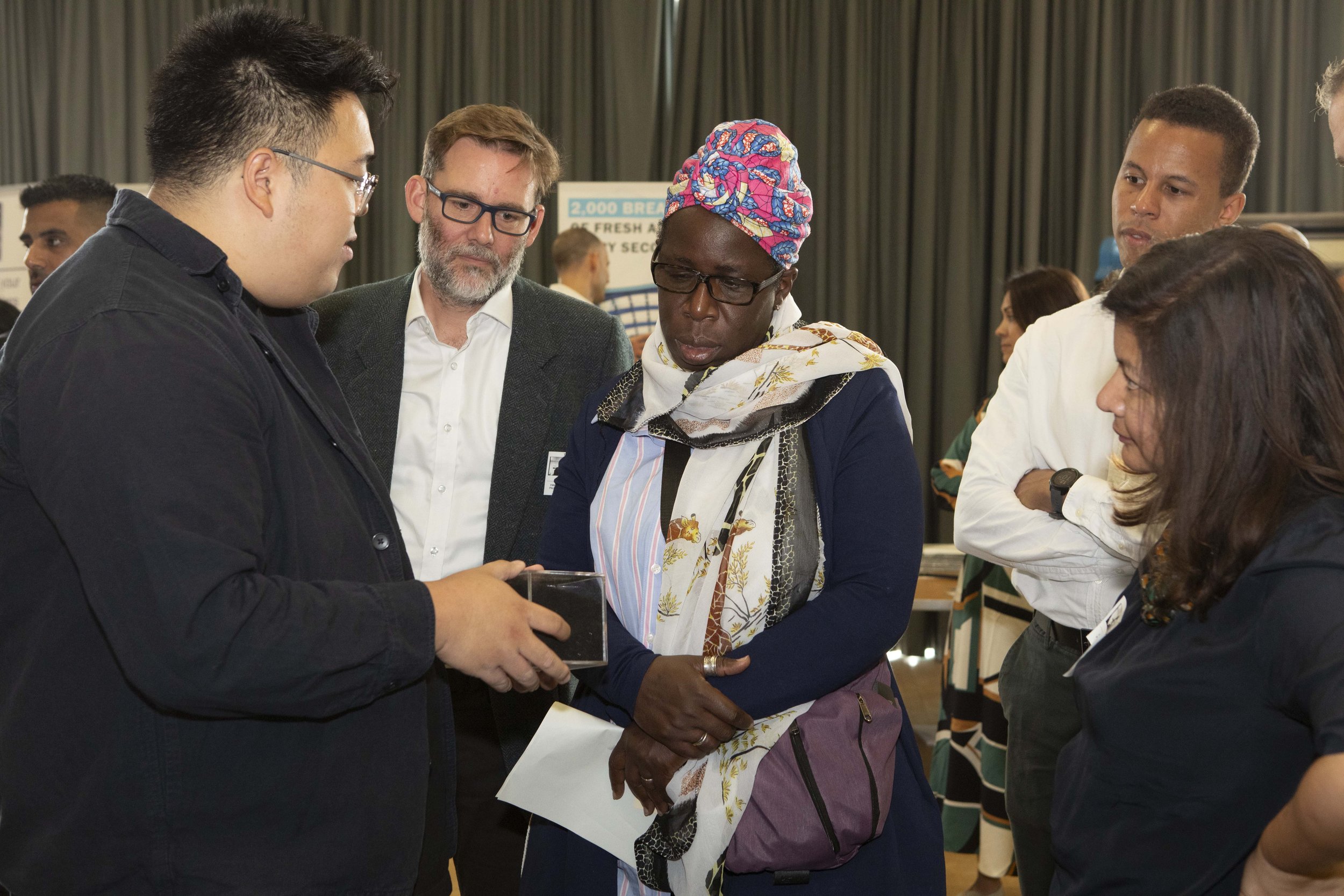
People
Raise Awareness
We exhibited at the Goodwood Festival of Speed, which attracted over 262,000 people this year and were invited by The Sustainable Market Initiative to present at COP28. The team also joined the London Clean Air Day, IAA Mobility in Munich and LCV Cenex in Millbrook to talk about tyre wear, its impact on the environment and our solution. We were featured in the UKII Intelligence Report, The Guardian, Forbes, TechCrunch, Dezeen and Wallpaper.
Other exhibitions we were part of are Plastic: Remaking our World at National Museum of Singapore, Waste Age at Cité des Sciences in Paris & Midlands Arts Centre in the UK, Makerversity: Designing for the Real World at Somerset House, London and Blut & Staub at Gewerbemuseum Winterthur in Switzerland.
Team
We are an interdisciplinary team of designers, engineers, and researchers committed to creating systemic change. This year, we became an accredited Living Wage Employer and prioritise fair compensation for our team. Diversity, equity, and inclusion are central to our hiring strategy, focusing on building a team with varied cultural and educational backgrounds. Our founders come from diverse backgrounds and believe better design comes from incorporating different voices.
This year, we hired 4 people from various disciplines to join our operations, technical and research teams. Over a quarter of our team identify as female.
Goal 5
Spend 1% of Annual Revenue on Responsibility in 2025
Support initiatives that align with our mission to reduce tyre wear and its environmental impact. In 2024, we donated to Asthma & Lung UK and Barts Charity, who are dedicated to cutting-edge research, safety, and innovation.
Goal 6
Grow Team to 35% Female-Identified Members in 2025
Improve gender balance in the automotive and transport industries and create more green jobs in STEM.
This report was published on 30th August 2024, and all content was accurate to the best of our knowledge. Should new information come to light, we will update it. We have written it in good faith in the spirit of transparency and welcome any feedback or support to improve its content. Contact us at hello@thetyrecollective.com.








